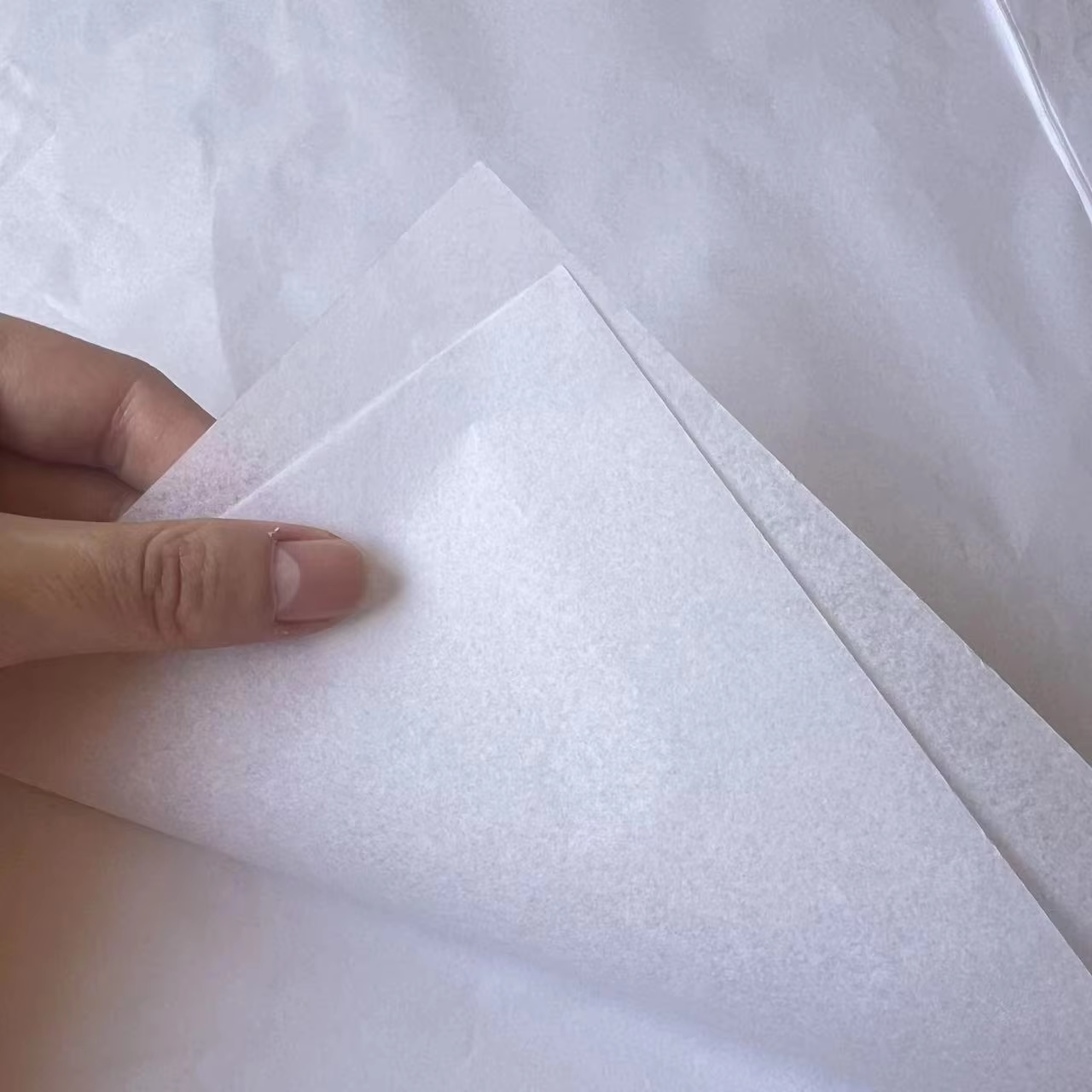White Solid Colored Tissue Paper Sheets: Safe Wrapping for Fresh Apples
Understanding Apple Oxidation and Desiccation Risks

The science behind apple oxidation during storage
When apples are cut or bruised, enzymes like polyphenol oxidase react with oxygen, initiating a chain reaction that produces brown pigments. This oxidation process degrades cell structure and accelerates quality loss, making containment during storage essential for preserving freshness.
How desiccation leads to texture and flavor degradation in apples
Moisture loss causes apple cells to collapse, turning crisp flesh into a leathery texture. A 2024 Horticultural Preservation Study found that even 5% water loss results in visible shriveling, while flavor compounds such as malic acid become unevenly concentrated, leading to unbalanced tartness.
Data insight: Up to 30% weight loss in unwrapped apples over 6 weeks (USDA, 2022)
Unprotected apples lose their natural cuticle wax during prolonged storage, with USDA research showing threefold greater mass reduction compared to wrapped fruit. This dehydration directly contributes to mealy textures and diminished market value, highlighting the importance of food-safe colored tissue paper in preventing spoilage.
## The Protective Role of Colored Tissue Paper in Apple Preservation### How Colored Tissue Paper Acts as a Barrier to Oxidation and Moisture LossColored tissue paper limits apple exposure to ambient oxygen, reducing enzymatic browning. Its semi-porous structure allows controlled gas exchange while retaining 87–92% of internal moisture over four weeks, based on fresh produce studies. This balance prevents desiccation without creating anaerobic conditions that promote decay. The layered fibers also absorb ethylene gas, slowing ripening by up to 19% compared to unwrapped apples (USDA, 2022).### Why White Solid Sheets Are Preferred Over Dyed or Printed VariantsUnbleached white tissue paper avoids the risk of dye migration–particularly important given that 78% of commercial food wraps tested positive for synthetic colorants in 2023 safety audits. Solid sheets offer uniform thickness (0.05–0.07mm), ensuring consistent protection, whereas printed versions have variable barrier performance due to ink coverage. Additionally, the absence of decorative elements reduces surface micropores by 62%, enhancing protective integrity according to food-grade material analyses.### Case Study: Reduced Spoilage Rates in Orchards Using Solid White Tissue WrapsA 12-month trial with California Fuji apples showed a 40% reduction in storage rot when using triple-layered white tissue wraps instead of traditional cardboard separators. Key outcomes included:- 28% lower ethylene levels in storage crates- 19% higher firmness retention after eight weeks- Only 0.3% tissue-to-fruit contact marks (versus 5.8% with waxed paper)Post-harvest specialists credit these improvements to the tissue’s optimal vapor permeability (12g/m²/24hr) and its ability to prevent bruising during cold-chain transit.Comparing Wrapping Materials: Why Food-Safe Colored Tissue Paper Outperforms Alternatives
Colored Tissue vs. Wax or Plastic Wraps: Breathability and Food Safety Advantages
Colored tissue paper that's safe for food actually works better than wax or plastic wraps because it lets things breathe without letting in contaminants. Regular plastic wrap is a problem since it doesn't let moisture escape, creating conditions where bacteria can grow. Tissue paper keeps things at around 85 to 90 percent humidity, which helps fruits and veggies stay fresh instead of drying out (as shown in research from the Postharvest Biology Journal last year). Another issue with plastic is that certain chemicals can leach into food when temperatures change during storage or transport. This isn't a concern with basic tissue paper that hasn't been coated with anything extra.
Evaluating Porous vs. Sealed Materials for Long-Term Apple Storage
Porous materials like tissue paper excel in extended storage. USDA trials show apples wrapped in breathable paper retain 23% more firmness over 12 weeks than those coated in wax. Tissue supports gradual ethylene dispersion without drying out the fruit, whereas sealed wraps trap gases that accelerate pulp softening.
Balancing Aesthetic Appeal With Functional Performance in Tissue Paper Selection
Plain white tissue paper offers good safety while still letting people see what's inside clearly. Colored or printed versions can be problematic since they might transfer ink onto products unless they're specifically labeled as food safe. Some tests done in orchards found that using plain white sheets instead of colored ones reduced bruising by around 42%. Brands that really want to add color should go for vegetable based dyes that have been approved for food contact applications. These guidelines were actually mentioned in last year's Food Packaging Materials Review, so it's not just our opinion but something backed up by industry standards too.
Preventing Spoilage Through Isolation: The Impact of Individual Wrapping
Minimizing Microbial Cross-Contact With Paper-Based Isolation
Individually wrapping apples in white solid tissue creates a physical barrier that minimizes surface contact. This method reduces microbial cross-contamination by up to 40% compared to bulk storage. The paper’s porosity permits limited airflow while blocking bacteria and mold spores from spreading between fruits.
Controlling Ethylene Gas Dispersion Through Individual Tissue Wrapping
Apples naturally emit ethylene, which speeds ripening in clusters. Tissue-wrapped apples exhibit 25% slower ethylene dispersion, as the paper absorbs excess gas. This regulated environment preserves firmness and acidity for 3–4 weeks longer than conventional storage.
Combining Paper Isolation With Cold Storage for Extended Shelf Life
Apples wrapped individually tend to stay crisp and sweet when kept in the fridge around 3 to 4 degrees Celsius for about two months maximum. Food scientists have found that regular tissue paper actually helps control moisture levels inside cold storage areas which cuts down on frost forming on the fruit surface and slows down bacteria development too. The combination of proper wrapping and controlled temperatures makes these apples last roughly twice as long as those left out at room temperature according to industry data. This kind of preservation technique is becoming increasingly important for grocery stores trying to minimize waste while keeping produce fresh for customers throughout the week.










